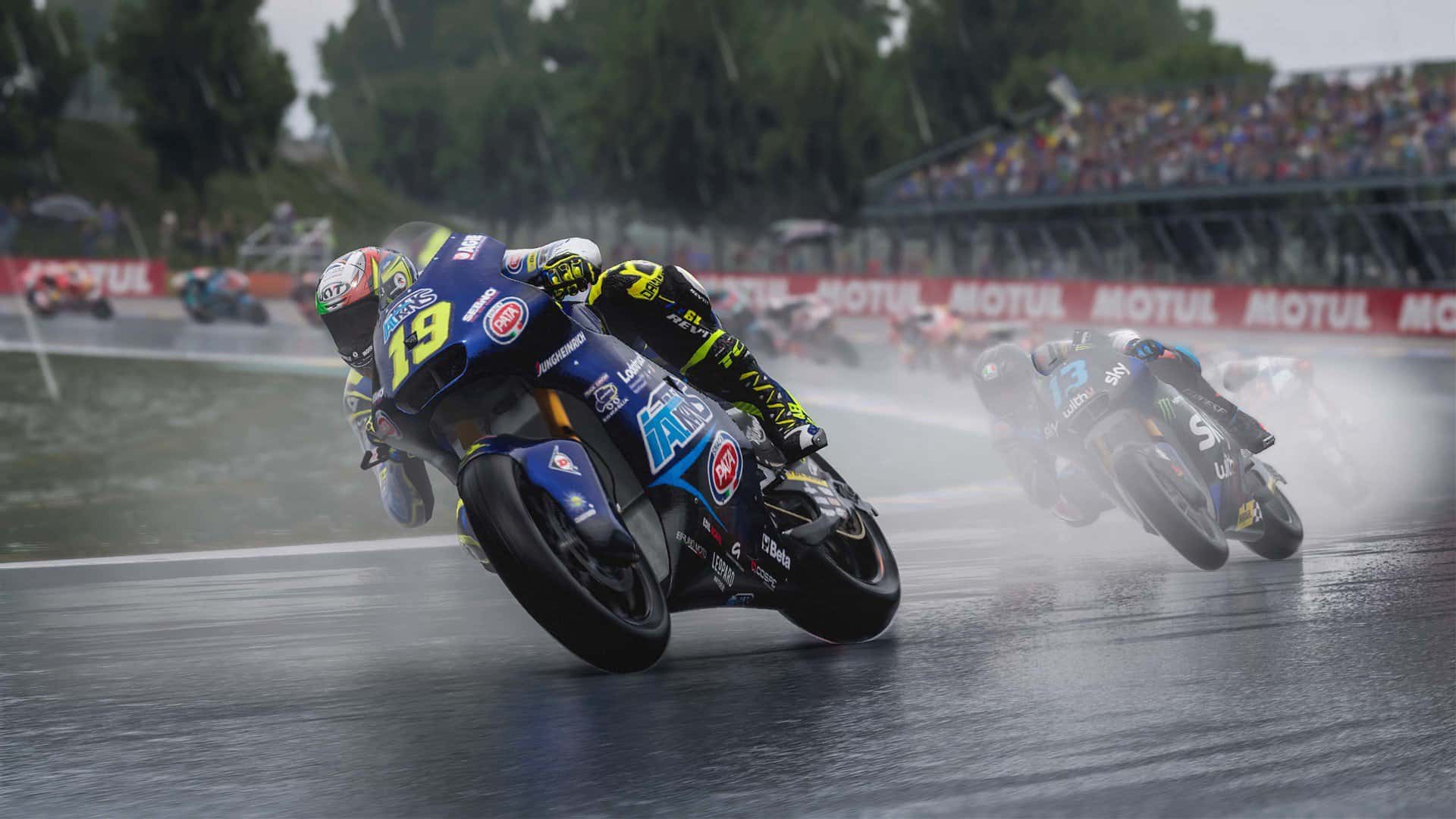Video Gamer is reader-supported. When you buy through links on our site, we may earn an affiliate commission. Prices subject to change. Learn more
Traditionally, those that thirsted for crashes went to Burnout. For a decade, starting in 2001, you could walk into a game shop, with a headful of rippling bonnets and downpours of glass, and be assured that Criterion would supply you with the goods. Through the likes of Burnout 2: Point of Impact, Burnout 3: Takedown, and the somewhat tautological Burnout Crash!, you were covered. Where do you go now? Certainly not Gran Turismo 7, whose director, Kazunori Yamauchi, doesn’t deign—or dare—to think about them. Forza Horizon 5 lacks the necessary crunch, and even the Dirt games, though bountifully spattered in mire, don’t quite do it. Grand Theft Auto is always an option, though maybe too grim. I believe I have the answer: May I present MotoGP 22.
The twist is, these are motorcycles, not cars, but stick with it. Mere minutes into the game—which is, I should say, a simulator, keenly observant of such matters as fuel consumption, tyre wear, and the temperature of one’s brakes—I came loose. Not to say that I crashed, as such. More that my rider, swathed in the acid-bright tones of energy drink logos, uncoupled from his chosen creature and skimmed, with a delicate flail, across the dirt. The camera, as if equally caffeinated, cut from a behind-the-back view to one that gazed up from the dashboard, to witness the weightless moment in which driver and machine parted ways. It was like those hull-mounted shots of rockets, as they shed their spent boosters and drift free of gravity’s grope. Only with more dust and bruises.

Moments before, I had attempted to power him through one of those corners that acquaint your kneecaps with the tarmac, and, in hindsight, the rattle in the right trigger (on PlayStation 5), should have tipped me off to the unwise nature of my strategy. MotoGP 22 is a game whose pleasures—outside of its crashes, at any rate—are well guarded. There are ranks of tutorials, all about braking and throttling, apexes, and shifting your weight, the better to lean into the coils of Laguna Seca, for example. When you do decide to jump in, embarking on a new career, say, you are treated to a roster of menu options that may seem, to the uninitiated, like the purview of a mid-level administrator. Behold, the land of staff salaries, contracts, termination clauses, and weekend management! There are development tests to endure, so that your technical staff can take copious notes, and there is a calendar with which to marshal the progress of your days. Of course, all this will be standard stuff for those who are initiated—for whom the occasion of a new MotoGP game is cause, in itself, for weekend management.
The developer is Milestone, a Milan-based studio which has tended and tuned its obsessions since 1994. What are these, exactly? Well, a glance at the more recent titles of its back catalogue should clue us in: Gravel, Ride, and Valentino Rossi: The Game. Indeed, there is plenty of all three in MotoGP 22. One mode, entitled “Nine Season 2009,” is furnished with footage of the heated rivalry between Rossi and his contemporaries Jorge Lorenzo, Casey Stoner, and Dani Pedrosa. These scenes are narrated by Mark Neale, the British documentarian behind such unleaded works as Faster and Hitting the Apex. Neale briefs us on matters of historical record, before we are given control and tasked not with breaking but with honouring them. The past was wild enough.

This sort of thing is rarer than you might suppose. Plenty of sports games lace us into the boots of legendary figures, courtesy of classic teams and likenesses, but few allow us to live—rather than merely live up to—their deeds. I was reminded of NBA 2K11, which gave us the Jordan Challenges: a series of targeted recreations—score sixty-three points in the Boston Garden, shoot over fifty-five per cent from the field, and so forth—that we might not only bask in the glories of history but that, in measuring ourselves against the greats, we might grasp, in some infinitesimal way, the delirium and difficulty of their art. This being all about MotoGP, however, you may need to adjust your eyes, and your expectations, in order to see what greatness looks like. The first such task is a scenario in which we assume control of Casey Stoner, with a ravenous Valentino Rossi on his tail; Stoner has leapt ahead, but the kicker is that Rossi doesn’t know that his rival has, in fact, been sneakily conserving fuel. Our mission: to go all out and widen the gap to half a second—an unthinkable chasm.
I spent much of the time, in MotoGP 22, relishing what greatness sounds like. To hear a bike graduate from Extremely Motivated Pair of Hair Clippers to Banshee on a Really Bad Day is a thrill. Forgive me for the blasphemy, but I can scarcely tell two motorbikes apart; flitting between the likes of Yamaha and Ducati, I felt like an amateur birder, training my binoculars on a blizzard of rare plumage. Then again, when it comes to simulators, nothing equips you to assess their depths in quite the same way as being out of yours. And credit must go to Milestone for presenting us with an atmospheric spectacle, as well as a gauntlet. How else can you tempt newcomers than with the promise of something you can practically smell, that wraps you in a petroleum-rich fug and—unlike my poor driver, loosed and aloft—refuses to let go?

